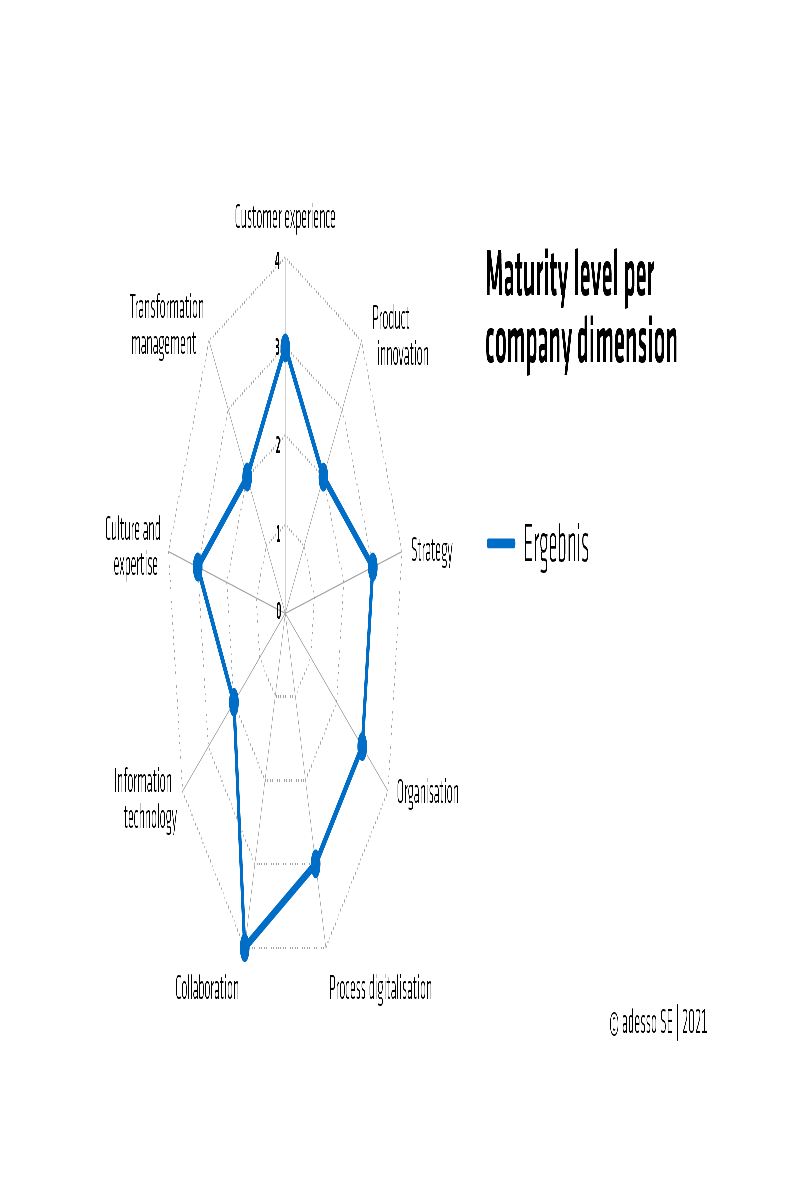15. June 2021 By Lisette Korte
The digital maturity check – a method for determining the digital maturity of companies
When carrying out digital transformation projects, many companies know that they want to change, evolve and remain competitive. But where is the best place to start? What are the most important issues to consider? What single aspect offers the greatest potential when it comes to starting a successful transformation project?
Areas of application
The digital maturity check (DMC) can help answer each of these questions. This is a scientifically based method that determines the current maturity level of a company with regard to digitalisation. A DMC can be used to get a snapshot of a company’s maturity level at the moment. This information is then used to set goals for new projects and lay the foundation for them to happen. Along with that, the check can also be extended to include regular quality control in digitalisation projects. Regular checks result in a higher digital maturity level in the dimensions where digitalisation projects are currently taking place.
Digitalisation dimensions
During the DMC, every effort is taken to ensure that the digital maturity level is measured in order to get the most comprehensive view possible. To do so, the DMC examines a total of nine business dimensions as well as two core management competencies:
- Customer experience
- Product innovation
- Strategy
- Organisation
- Process digitalisation
- Collaboration
- Information systems
- Culture and expertise
- Transformation management
- Capacity
- Management expertise
Procedure
As a core resource, maturity models require data and assessments that are categorised and available for analysis to obtain an accurate, well-founded evaluation. The DMC examines this in a comprehensive online self-assessment carried out by company employees. The team should be as diverse as possible and come from across the company if the goal is to get useful results. Each employee scores each question based on their subjective assessment on a Likert scale.

Efforts should be made to ensure the team is as diverse as possible and comes from across the company if the goal is to get useful results.
After an additional review of the results, the company is assigned one of five possible maturity levels. This can be considered both as a whole and by dimension.
An additional assessment of management competences is additionally conducted.

Based on the results of the assessment, further interviews are carried out with selected roles to obtain a finer analysis of the present situation at the company. At the end, a comprehensive report is prepared to outline the results, which is supplemented with recommendations for action for possible future projects.
Would you like to learn more about the DMC or try out an abridged version of it? Then check out my collagues' blog post on the DMC quick check!
You will find more interesting topics from the adesso world in our latest blog posts.


